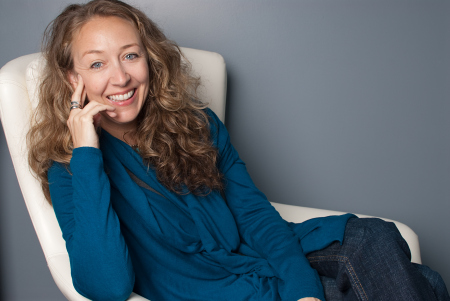You have no items in your cart. Want to get some nice things?
Go shopping I wasn’t at all sure what to expect of a book about a cult. I’ve seen a couple of films about cults and somehow there’s always a point of view tinged with pity, which renders the characters a bit stupid and ends up making me feel uncomfortable. Not so in Amity and Sorrow. Maybe it’s because, in a way, it’s not a book about a cult so much as a book about the after effects of life within one. When I think about Peggy Riley’s writing, the words that keep coming back to me are muscular and sinewy. The style of writing draws the reader in and places them right up close to the characters and the location. It’s almost more visual than a film, the deep red earth, fire, rain, visibly parched heat. Amity and Sorrow is a physical story.
I wasn’t at all sure what to expect of a book about a cult. I’ve seen a couple of films about cults and somehow there’s always a point of view tinged with pity, which renders the characters a bit stupid and ends up making me feel uncomfortable. Not so in Amity and Sorrow. Maybe it’s because, in a way, it’s not a book about a cult so much as a book about the after effects of life within one. When I think about Peggy Riley’s writing, the words that keep coming back to me are muscular and sinewy. The style of writing draws the reader in and places them right up close to the characters and the location. It’s almost more visual than a film, the deep red earth, fire, rain, visibly parched heat. Amity and Sorrow is a physical story.
Amaranth is the mother of two teenage daughters, Amity and Sorrow. Down on her luck in her late teens, Amaranth marries Zachariah, who was brought up in a polygamist cult. He promises her that he left the old way of life behind, yet over the years, he brings more “wives” home and finally Amaranth is one of 50. We first meet mother and daughters at the end of a four day non-stop car journey. Initially, it appears that the trouble that drove Amaranth away from the cult came from outside, in the form of the police and a fire, but the spectre of her husband, who may have followed them, is also there and it is because of him that Amaranth has driven so far without rest, that she falls asleep at the wheel of the car and crashes into a tree.
Bradley, a poor Oklahoma farmer, takes the three women in and slowly he and Amaranth develop a relationship of sorts. New possibilities open up for Amanranth and for Amity, the younger daughter, who develops an awkward child-adolescent relationship with Dust, a boy Bradley has more or less adopted. Only Sorrow remains determined not to look to the future. The only thing she wants is to go home, to her father, to her God.
Amity and Sorrow is the story a battle of wills between a mother and her two daughters as their allegiances change. It is the story of a mother who knows she has failed not only herself, but her children, and is struggling to do something about it. The backdrop is the fight to farm in an environment where nature does not want to be tamed, where it is dry and stubborn. Just like Sorrow.

Is it Sorrow’s inherent nature to be so uncommonly difficult or is the way she behaves more the result of what she has been through? She was brought up to be the cult’s oracle, she believes she has special powers and that she, therefore, is special. She has always treated Amity as if her younger sister is less than her. Will Amaranth be able to do anything to save Sorrow? Will she be able to stop her destroying Amity before she destroys herself? There is more to the situation than initially meets the eye.
What I like so much about the way Peggy Riley tells this story is the subtlety.
All the characters are flawed, but no-one represents good or evil, no-one represents a point of view. And the history of faith is all about point of view. Sorrow is a character who would try your patience to the limit if you met her off the page. Amaranth looks the other way at crucial moments, just as she must have done within the cult at times. Amity tries too hard to please and suffers for it.
I would be curious to see how European and American readers interpret this book. Cults are a more widespread phenomenon in the USA and so readers may respond to that element of the story differently. For me, rather than a book about “god, sex and farming”, which is how Peggy Riley describes it, I think Amity and Sorrow is about the body, nature and hope. But that doesn’t mean I enjoyed the book any less than if I’d found it to be about god, sex and farming. I suspect that it may actually mean the same thing, the meaning is just worded differently on the two opposite sides of the Atlantic.
Amity & Sorrow is out now from Tinder Press.

About Kate Brown
Kate Brown is an English writer and filmmaker who lives in Berlin. Her films have been screened at festivals and on television in Europe and the USA. Her short stories have been published in the Bristol Short Story Prize Anthology: Volume 3 and by Cinnamon Press, among others.





So pleased to see Amity & Sorrow in Litro today. https://t.co/EU6aZB71Du Many thanks, @katefromberlin for a lovely review!
Amity & Sorrow by Peggy Riley | Litro https://t.co/Ss0Bm2XvJM